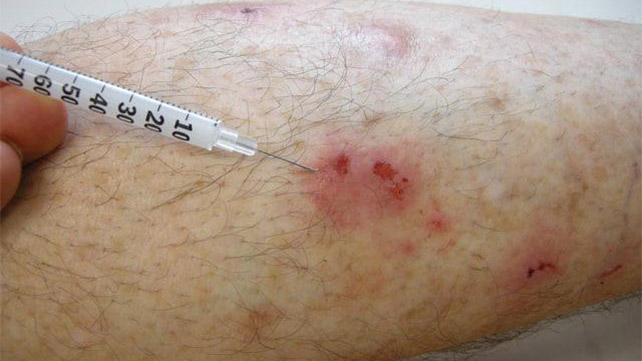Hypertrophic Scar Removal - Abu Dhabi - Dubai
Hypertrophic scars are raised, thickened scars that occur as a result of excessive collagen production during the wound healing process. While they are similar to keloid scars, hypertrophic scars remain within the boundaries of the original wound. Several treatment options are available to manage hypertrophic scars. Here are some common approaches:
- 1. Silicone Gel Sheets or Silicone-Based Creams: Applying silicone gel sheets or using silicone-based creams can help flatten and soften hypertrophic scars. These products create a barrier that hydrates the scar tissue and reduces collagen production. They need to be consistently used over several weeks or months for optimal results.
- 2. Pressure Therapy: The application of pressure to hypertrophic scars using bandages, compression garments, or adhesive tapes can help flatten the scar tissue. This technique is particularly effective for scars that are raised or located on joints or areas prone to tension. Pressure therapy should be worn consistently for several months to achieve noticeable improvements.
- 3. Corticosteroid Injections: Intralesional corticosteroid injections are commonly used to treat hypertrophic scars. Steroids help reduce inflammation and inhibit collagen production. A dermatologist or healthcare provider will administer the injections directly into the scar tissue at regular intervals. Multiple sessions may be required for optimal results.
- 4. Cryotherapy: Cryotherapy involves freezing the hypertrophic scar with liquid nitrogen, causing the scar tissue to shrink and flatten. This procedure is usually performed by a healthcare professional and may require multiple sessions.
- 5. Laser Therapy: Different types of laser treatments, such as pulsed-dye laser or fractional laser resurfacing, can be used to reduce the redness, thickness, and texture of hypertrophic scars. Laser therapy targets the scar tissue while minimizing damage to the surrounding skin. Multiple treatment sessions may be necessary, and results vary depending on the scar's characteristics.
- 6. Surgical Excision: In some cases, surgical excision may be considered for hypertrophic scars that are resistant to other treatments. During the procedure, the scar tissue is surgically removed, and the wound is carefully closed to promote proper healing. However, there is a risk of the scar recurring or becoming more prominent after surgery.
It's important to note that not all treatments work equally for everyone, and the effectiveness of each method may vary depending on the individual and the scar's characteristics. It's advisable to consult with a dermatologist or healthcare professional who can evaluate your specific situation and recommend the most appropriate treatment options for your hypertrophic scars.

